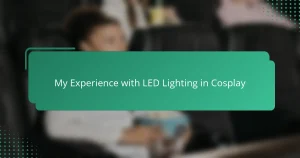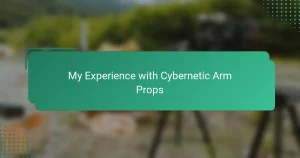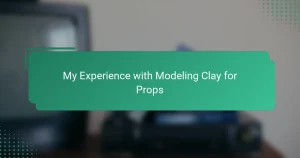Key takeaways
- Foam is a versatile material for prop making, allowing for detailed designs and lightweight armor that enhances comfort and mobility.
- EVA foam strikes a balance between durability and flexibility, making it ideal for armor projects while thickness variations help achieve desired shapes and strength.
- Essential tools like sharp utility knives, heat guns, and cutting mats improve precision and the overall crafting experience, leading to cleaner results.
- Detailing with layered pieces and proper painting techniques, including the use of primer and sealers, significantly enhances the visual appeal and durability of foam armor.
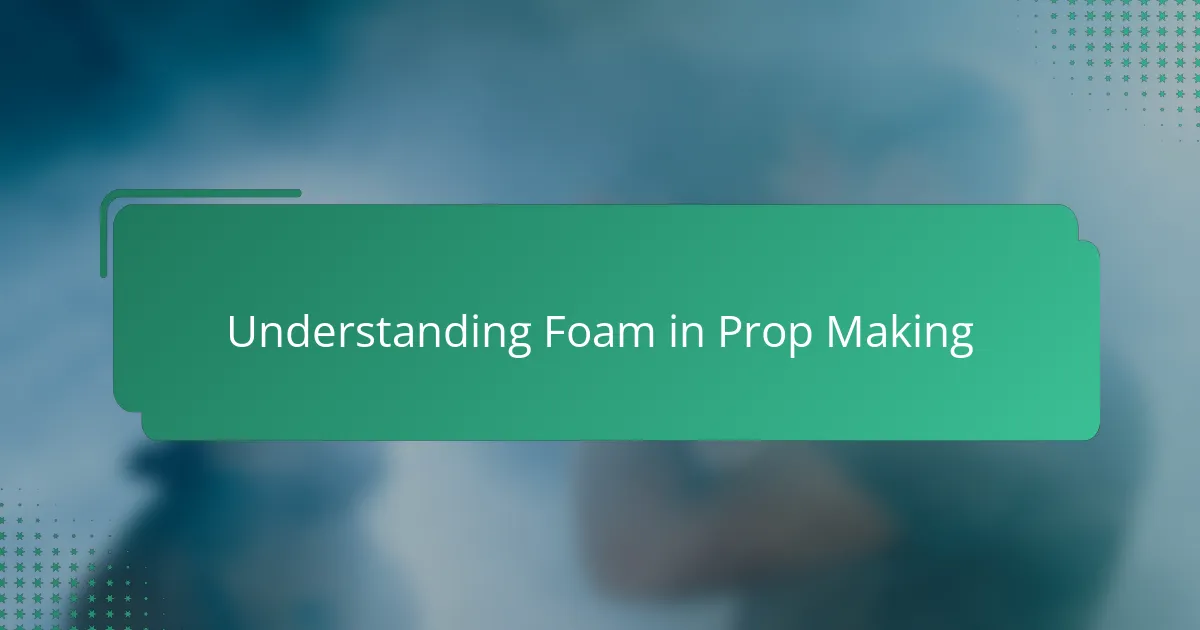
Understanding Foam in Prop Making
When I first started working with foam for armor design, I was honestly surprised by how versatile the material is. Foam isn’t just lightweight; it’s also incredibly easy to shape and manipulate, which means you can create detailed textures and complex forms without stressing over heavy or rigid materials. Have you ever struggled with bulky props that wear you down after minutes of use? Foam solved that problem for me completely.
What fascinates me about foam is how it responds to heat and cutting tools. Using a simple heat gun, I could curve and sculpt pieces to match the contours I envisioned, making the armor feel almost organic rather than stiff and artificial. That tactile control gave me a level of creative freedom I hadn’t expected, turning what seemed like a simple material into a blank canvas for sci-fi fantasy.
Of course, foam has its quirks too. It’s lightweight but delicate, meaning you need to understand its limits before pushing it too far. I remember the first time I accidentally tore a foam segment because I underestimated its flexibility. Moments like that taught me patience and respect for the material, both essential when crafting something that’s not just a prop but a wearable piece of art.
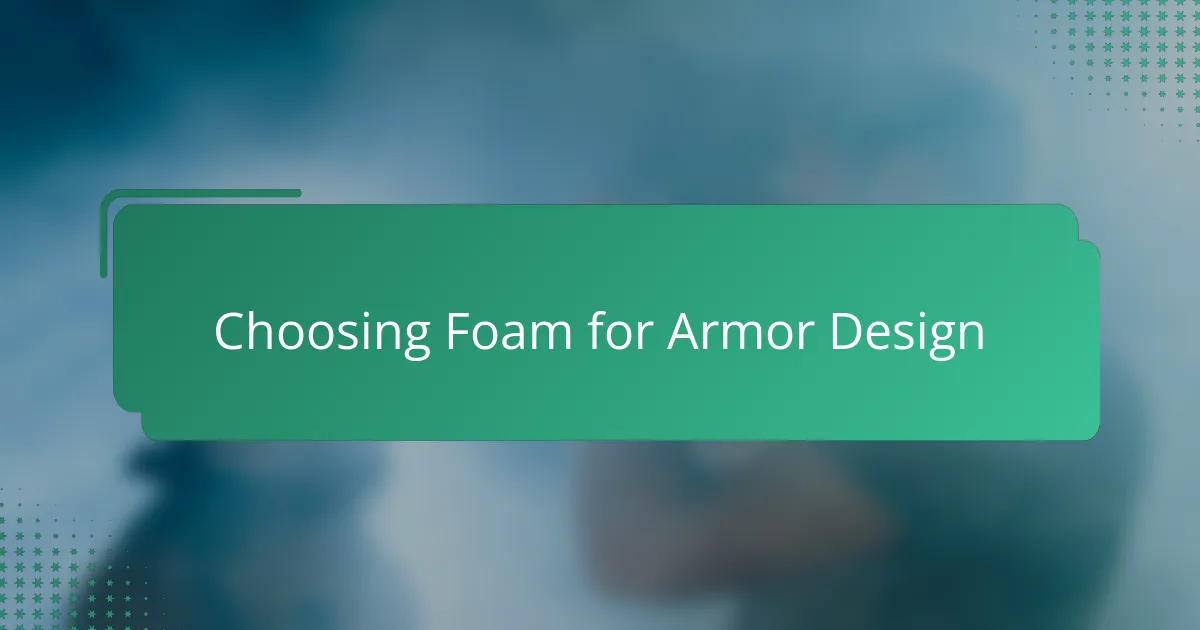
Choosing Foam for Armor Design
Choosing the right foam for armor design felt like picking a partner in crime—each type brought its own strengths and challenges. I quickly learned that EVA foam struck a perfect balance for my projects: dense enough to hold crisp edges but flexible enough to bend with movement. Have you ever felt stuck between durability and ease of shaping? EVA made that dilemma much easier to solve.
I also experimented with craft foam early on, which was super affordable and great for fine details, but it lacked the sturdiness I needed for larger armor pieces. That contrast made me appreciate how critical foam density really is. When armor needs to look impressive but also take a hit (or a bump), choosing a foam that can stand up to wear feels like more than just a technical decision—it’s a creative one that impacts how your work lives and breathes.
Thinking about foam thickness was another eye-opener. Thinner sheets were perfect for layering and contouring, while thicker slabs provided structure and bulk. I remember piecing together my first chest plate using multiple foam thicknesses, and it was like building a puzzle where every choice mattered. For me, understanding foam variety became the foundation of crafting armor that’s not only wearable but believable.
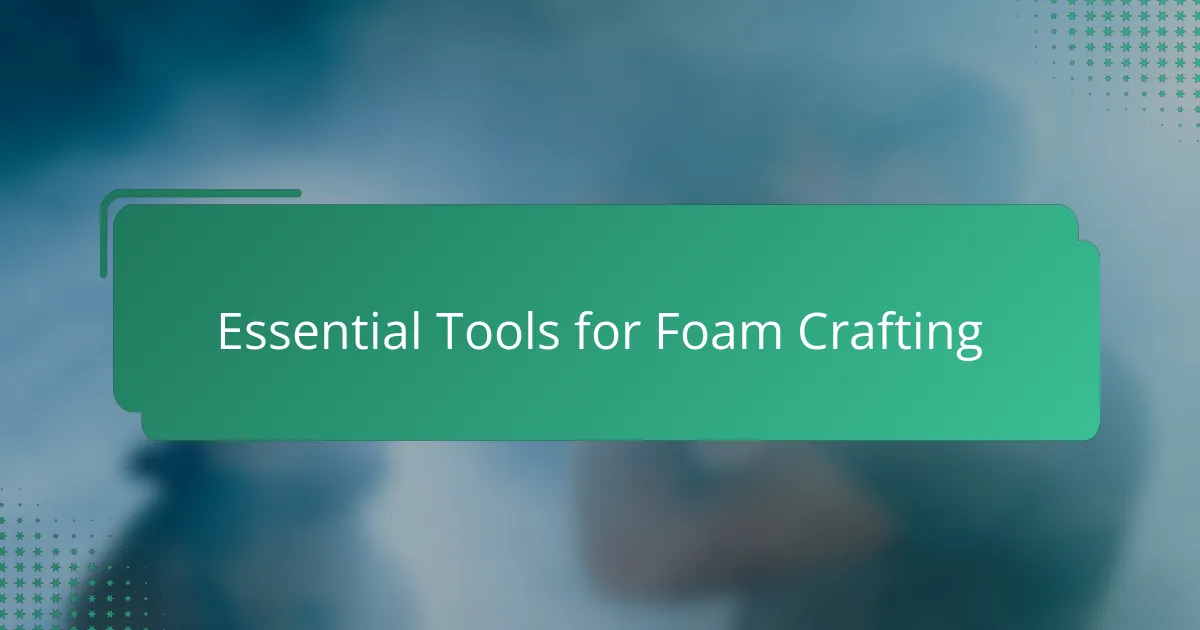
Essential Tools for Foam Crafting
Finding the right tools made all the difference when I transitioned from simply cutting foam to truly crafting armor. A sharp utility knife became my best friend; nothing beats the clean, precise edges it delivers when you’re aiming for a professional look. Have you ever tried cutting foam with a dull blade? It ends up tearing or crumbling, which can be incredibly frustrating and time-consuming.
Aside from blades, I quickly realized that a reliable heat gun is indispensable. It’s amazing how heating foam just enough lets you bend and mold it like clay, giving your armor that smooth, curved finish instead of awkward, boxy shapes. I remember the first time I perfectly curved a shoulder piece—it felt like a breakthrough moment, like the armor was finally coming to life.
Last but not least, I can’t stress enough the value of a good cutting mat and a metal ruler. The mat protects your work surface and lets you slice confidently without hesitation, while the ruler ensures every cut is straight and measured. Using those tools gave me the control I needed to move from rough sketches to sharp, clean components, which made the whole crafting process feel more intentional and rewarding.
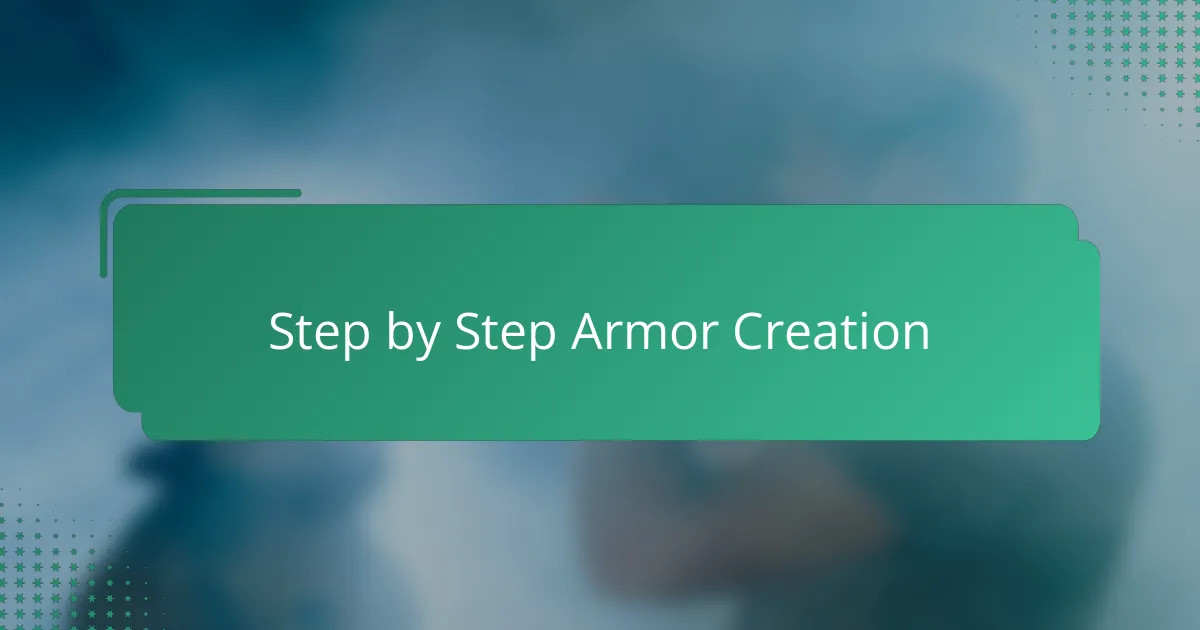
Step by Step Armor Creation
Starting the armor creation, I always begin by sketching out each piece directly onto the foam sheets. Have you ever tried eyeballing measurements without a plan? I did once, and it led to wasted material and frustration. Laying down clear patterns first saves time and keeps the build efficient.
Cutting the foam is where precision meets patience. I use slow, deliberate strokes with my utility knife to avoid jagged edges or accidental tears. One time, rushing this step meant my chest plate ended up lopsided, which was a tough lesson in taking my time.
Once all pieces are cut, the magic happens during assembly. Heating small sections and gently bending them lets me create curves that fit comfortably on the body—something flat foam just can’t achieve. Each glued seam feels like bringing the armor from flat sheets to a living, wearable sculpture, and that moment never gets old.
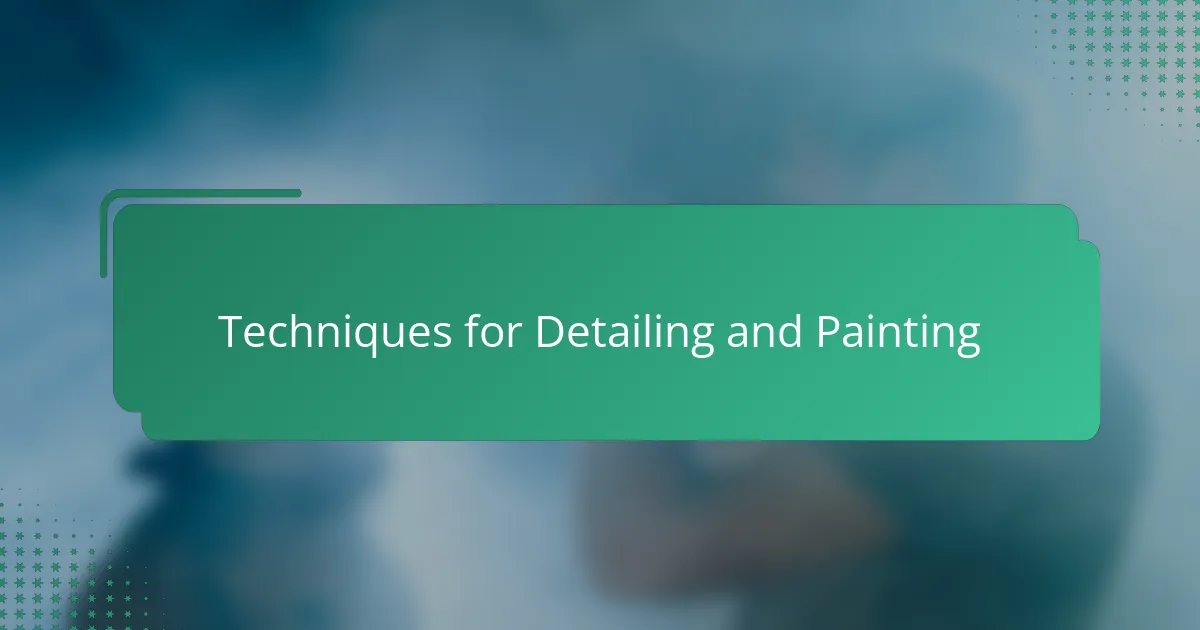
Techniques for Detailing and Painting
When it comes to detailing foam armor, I found that layering thin strips or small cutouts adds depth and complexity without overcomplicating the base structure. Have you tried using a hot glue gun to attach these details? It’s quick, but I learned patience is key—rushing this step often left me with messy edges that took extra time to fix. The subtle shadows created by layering truly bring the piece to life.
Painting foam is another game changer. Primer is essential—it seals the porous surface so your paint doesn’t soak in unevenly. I’ve experimented with both acrylics and spray paints, and while acrylic offers control and blending options, spray paints give a smooth, even coat faster. One trick I swear by is dry brushing a lighter color over raised details; it highlights textures beautifully and adds that worn, battle-tested vibe I love in sci-fi armor.
Sealing your paint job makes all the difference in durability and finish. I use a clear matte sealer to keep the colors vibrant while avoiding that shiny, plastic look that breaks immersion. Have you ever handled a prop only to see the paint chip off after a few uses? I have, and it stings every time. Investing a bit more effort here saves hours of touch-ups later and keeps your armor looking sharp during every convention or shoot.

Common Challenges and Solutions
Working with foam, I quickly realized one of the trickiest challenges is balancing flexibility with durability. Foam tears easily if stretched too much, but too rigid a piece can crack or feel uncomfortable. Have you ever experienced that moment when a suddenly snapped seam ruins hours of work? For me, the solution was all about reinforcing stress points with contact cement or layering thinner pieces to build strength without losing that essential flexibility.
Another challenge I bumped into was achieving smooth, seamless curves without warping the foam. Early on, overheating could cause bubbling or unwanted shrinkage. It took some trial and error to find the sweet spot on my heat gun settings, and patience became my best friend. I remember feeling pretty frustrated until I mastered gentle, even heating—after that, my armor looked more polished and professional, and the process felt much less like guesswork.
Finally, paint adherence presented its own set of headaches. Without proper priming, paint would either soak in unevenly or peel off after minimal handling. That’s when I switched to using Plasti Dip as a primer and sealer, which acted like a flexible skin over the foam. The difference was night and day—colors popped, and scuffs became far less stressful to fix. Don’t underestimate how these finishing touches can make the difference between a prop that looks homemade and one that holds up under the spotlight.
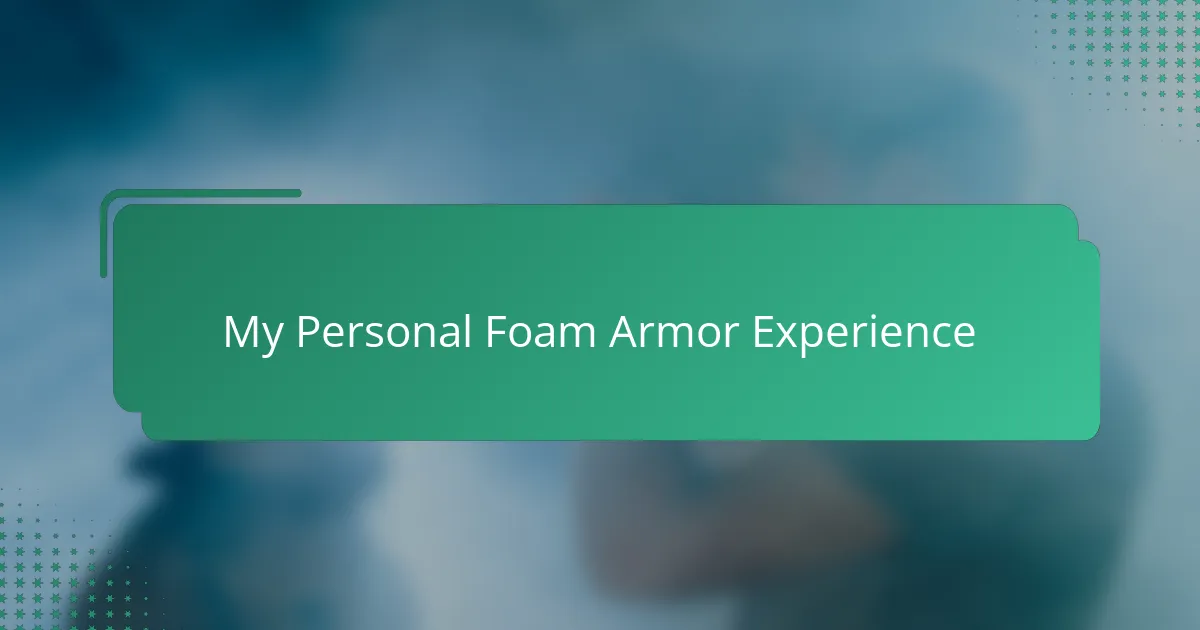
My Personal Foam Armor Experience
Working with foam armor really transformed how I approach prop making. I recall the first time I wore a full foam suit—I felt this mix of pride and amazement at how light it was compared to my previous builds. Have you ever been surprised by a material’s performance? That moment made me realize foam wasn’t just practical; it was a game changer for comfort and mobility during long events.
There were definitely moments of trial and error along the way. I vividly remember misjudging the thickness for a gauntlet piece—it ended up floppy and awkward. That taught me how crucial it is to test each section before committing fully. Sometimes, foam feels like a temperamental partner that demands patience, but when it all comes together, the payoff is incredibly rewarding.
What I love most is how foam invites experimentation. I found myself constantly tweaking shapes and layering details, encouraged by the material’s forgiving nature. Each new project became a dialogue between me and the foam, where I learned to listen closely to its limits and possibilities. Has that ever happened to you with a favorite medium? For me, foam armor isn’t just crafting—it’s a creative relationship that keeps evolving.
